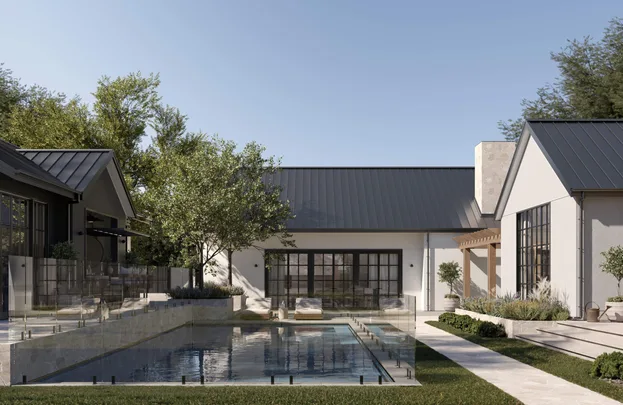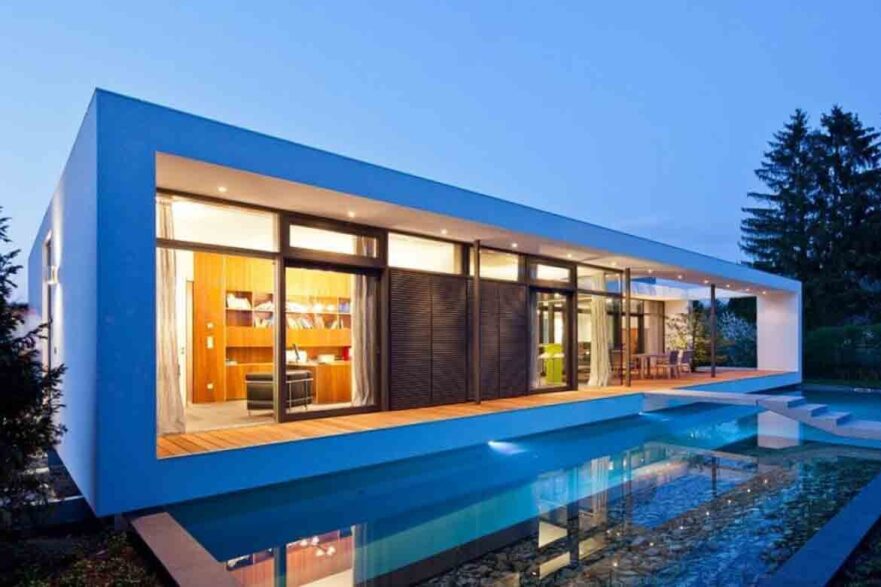Create Your Dream Space with Renowned Melbourne Home Residential Projects Professionals
Wiki Article
Why Modern Home Style Is Essential for Sustainable Living Today
The combination of contemporary home architecture right into lasting living techniques is increasingly recognized as an essential aspect in addressing ecological challenges. By leveraging cutting-edge products and energy-efficient styles, contemporary homes not only minimize eco-friendly footprints yet also enhance the quality of life for their occupants.Cutting-edge Materials and Techniques
In recent years, the integration of ingenious materials and strategies has reinvented modern-day home architecture, with numerous architects and contractors embracing sustainable techniques. The application of products such as bamboo, recovered wood, and recycled steel not only minimizes ecological influence yet likewise boosts the aesthetic appeal of homes. Bamboo, for instance, is a quickly sustainable source that uses outstanding toughness and versatility, making it a suitable selection for structural aspects and finishes.Furthermore, progressed building and construction methods, such as modular building and 3D printing, have actually become considerable factors to sustainability. Modular building and construction allows for decreased waste and much shorter building and construction times, while 3D printing enables accuracy in developing complex designs with minimal material usage. These techniques not just simplify the structure process but also lower the carbon footprint related to standard building methods.
Moreover, using ingenious insulation materials, such as aerogels and phase-change materials, enhances thermal efficiency, enabling homes to preserve comfortable temperatures with much less energy usage. As engineers remain to explore and execute these new materials and strategies, the capacity for creating sustainable living environments ends up being progressively viable, inevitably causing a more responsible method to home architecture.
Energy Effectiveness in Style
Lots of property owners are increasingly focusing on power effectiveness in their building styles, recognizing its vital duty in reducing utility prices and minimizing ecological impact. Reliable energy-efficient design starts with the orientation and format of a home, optimizing natural light and air flow. This can considerably lower dependence on man-made illumination and mechanical home heating or cooling systems.
The option of high-performance insulation materials and energy-efficient home windows plays a vital role in preserving a comfortable indoor environment, decreasing warmth loss in winter months and maintaining insides cool down throughout summer season. melbourne home residential projects. Additionally, integrating passive solar design principles can harness sunshine for heating, thereby decreasing the requirement for standard power resources.
Lasting building practices also include using energy-efficient appliances and fixtures, which add to lower energy usage over the life expectancy of the home. By integrating sustainable techniques right into the design phase, engineers can create homes that not just satisfy aesthetic preferences but additionally follow stringent energy efficiency criteria.

Combination of Smart Modern Technology
The integration of smart innovation into contemporary home design represents a transformative method to boosting both ease and sustainability. By incorporating intelligent systems and devices, property owners can maximize power usage, enhance everyday tasks, and enhance overall lifestyle. Smart thermostats, as an example, enable accurate temperature level control, adapting to locals' schedules and preferences, which dramatically reduces energy waste.In addition, wise lighting systems can be set to adjust based upon natural light schedule, ensuring that energy is made use of efficiently throughout the day. These systems not only minimize electrical power consumption however additionally expand the life expectancy of lighting fixtures - melbourne home residential projects. In addition, clever devices add to sustainability by supplying real-time information on energy usage, enabling homeowners to make enlightened decisions concerning their usage routines
Home automation systems assist in seamless integration of various technologies, allowing control from a single user interface. This interconnectedness reaches security systems, water administration, and environment controls, producing a holistic strategy to lasting living. Inevitably, the incorporation of wise innovation into contemporary design not only enhances functionality yet likewise straightens with the broader objectives of environmental stewardship, making homes much more resilient and versatile in an ever-evolving globe.
Influence on Urban Preparation
Smart technology not only boosts private homes but additionally dramatically influences city planning, improving how cities are made and function. The integration of clever systems in modern-day design permits for a lot more reliable resource monitoring, which is essential in urban environments where area and sources are restricted.Cities significantly leverage data analytics and IoT (Internet of Points) gadgets to enhance traffic flow, energy intake, and public solutions. For circumstances, smart grids can take care of electrical energy use in actual time, minimizing both costs and exhausts. By prioritizing sustainable practices, city planners can create durable infrastructures that adapt to environmental changes and population growth.
Moreover, contemporary home style encourages mixed-use advancements that promote walkability and reduce reliance on autos, even more decreasing city carbon impacts (melbourne home residential projects). Public areas are made with sustainability in mind, incorporating environment-friendly roof coverings, city gardens, and permeable pavements that enhance biodiversity and manage stormwater efficiently
Enhancing Lifestyle
Integrating lasting style principles right into contemporary home architecture dramatically improves lifestyle for locals. By prioritizing energy effectiveness, natural light, and sustainable products, these homes produce settings that cultivate health and convenience. Thoughtful layout elements, such as open layout and large home windows, not only lower power consumption however additionally advertise mental wellness via boosted direct exposure to natural light and outdoor views.
Furthermore, modern-day sustainable homes often integrate green areas, such as gardens or environment-friendly roofings, which contribute to improved air top quality and provide homeowners with chances for leisure and leisure. These rooms motivate a link with nature, boosting general mood and lowering tension degrees.
In addition, using lasting materials can lessen ecological impact, resulting in healthier interior atmospheres by minimizing damaging chemicals. This concentrate on health prolongs beyond specific homes to neighborhoods, as communities made with sustainability in mind usually include walkable locations, advertising physical task and social communication amongst homeowners.

Final Thought
Finally, modern home architecture plays an important function in sustainable home residential architectural projects promoting lasting living via the consolidation of ingenious materials, energy-efficient styles, and smart innovations. This strategy not just addresses prompt ecological concerns yet also contributes to the long-term health of areas. By boosting city planning and focusing on the top quality of life, modern building practices create harmonious living spaces that line up with eco-friendly concepts, guaranteeing a sustainable future for generations to come.Report this wiki page